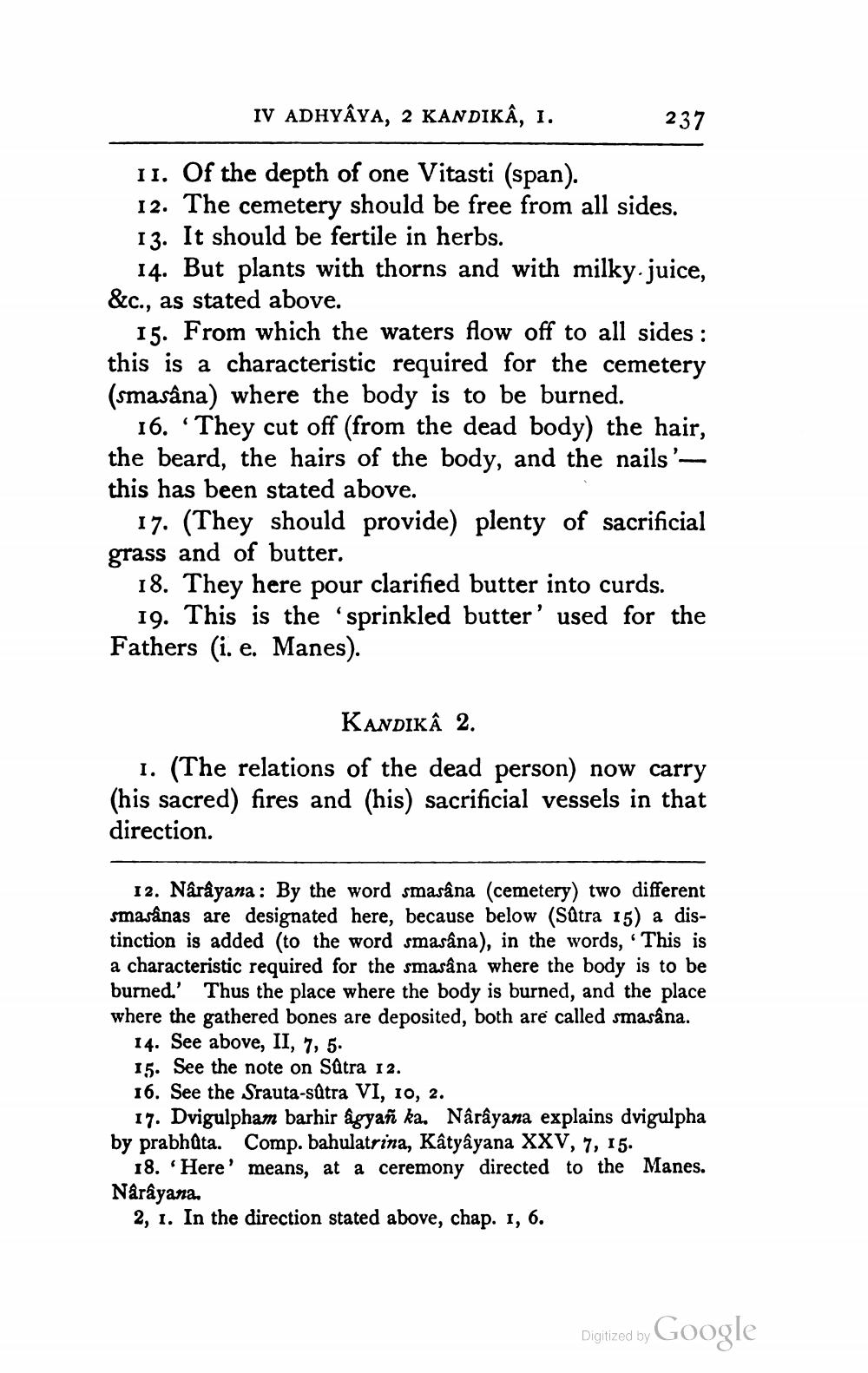________________
IV ADHYAYA, 2 KANDIKÂ, 1.
II. Of the depth of one Vitasti (span). 12. The cemetery should be free from all sides. 13. It should be fertile in herbs.
14. But plants with thorns and with milky.juice, &c., as stated above.
15. From which the waters flow off to all sides: this is a characteristic required for the cemetery (smasâna) where the body is to be burned.
16. They cut off (from the dead body) the hair, the beard, the hairs of the body, and the nails'— this has been stated above.
237
17. (They should provide) plenty of sacrificial grass and of butter.
18. They here pour clarified butter into curds. 19. This is the 'sprinkled butter' used for the Fathers (i. e. Manes).
KANDIKA 2.
1. (The relations of the dead person) now carry (his sacred) fires and (his) sacrificial vessels in that direction.
12. Nârâyana: By the word smasâna (cemetery) two different smasânas are designated here, because below (Sûtra 15) a distinction is added (to the word smasâna), in the words, 'This is a characteristic required for the smasâna where the body is to be burned.' Thus the place where the body is burned, and the place where the gathered bones are deposited, both are called smasâna. 14. See above, II, 7, 5.
15. See the note on Sûtra 12.
16. See the Srauta-sûtra VI, 10, 2.
17. Dvigulpham barhir âgyañ ka. Nârâyana explains dvigulpha by prabhuta. Comp. bahulatrina, Kâtyâyana XXV, 7, 15.
18. 'Here' means, at a ceremony directed to the Manes. Nârâyana.
2, 1. In the direction stated above, chap. 1, 6.
Digitized by Google




